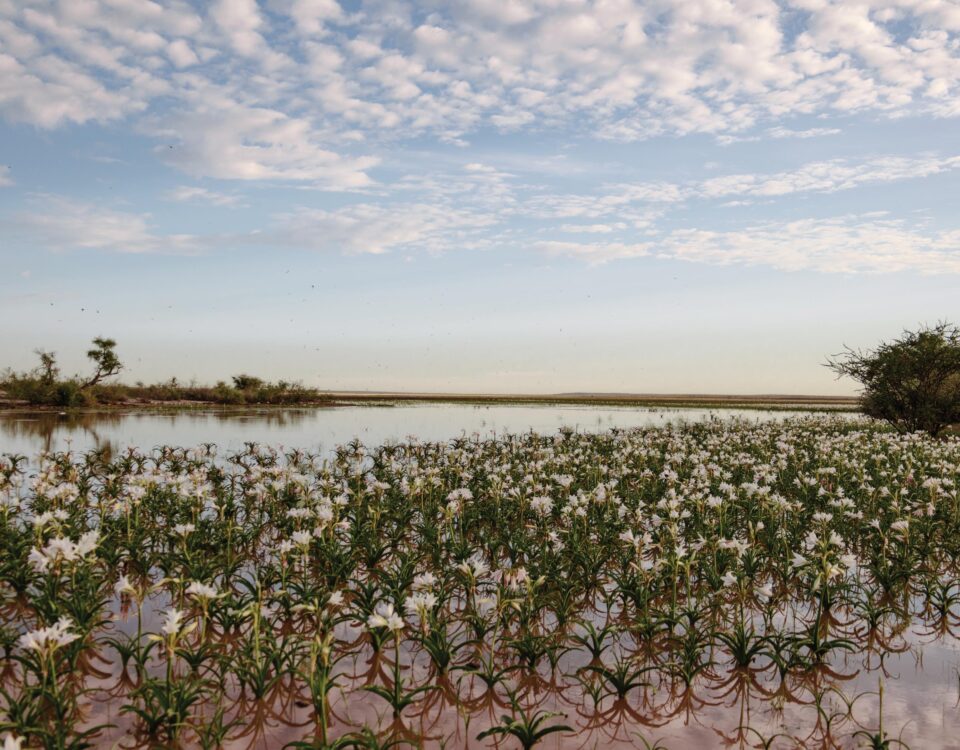Namibian fishing waters among the best
August 12, 2012Push your 4×4 to the limits
August 12, 2012by Nicolette Jacobi
With the Dorob National Park as your base, comfortable day trips can be undertaken along routes into the neighbouring Namib-Naukluft Park. One such route leads through the northern reaches of the park past the Moon Valley, through the Swakop River Valley and the Welwitschia Plains east of Swakopmund.
 Millions of years and even more cubic metres of water contributed to the formation of an internationally known tourism attraction 30 km east of Swakopmund.
Millions of years and even more cubic metres of water contributed to the formation of an internationally known tourism attraction 30 km east of Swakopmund.
Just off the C28 –the road leading from the interior to the Namib Desert – lies an expansive lunar-like landscape called the Moon Valley of Namibia. Once a big mountain range, erosion has reduced it to rolling, low-lying hills.
For the past two million years, the Swakop River and its many tributaries flowed through this valley, giving it life and shaping the natural phenomenon you see today. According to geologists, the group of hills was pushed up through the earth’s surface about 500 million years ago.
The area is a photographer’s heaven. On misty mornings, when the coastal fog penetrates between the hills, the valley can be described as ghostlike. But once the sun has risen high in the sky and the fog has dispersed, the lunar landscape can be seen in all its colours and contours. Be sure to spend some time at the lookout point.
A botanical curiosity
A trip to the Moon Valley goes hand-in-hand with a visit to the Welwitschia Plains, about 30 km away. On the way to the Welwitschia Plains, relics of the First World War can be viewed at a site where a patrol had once set up camp. An interesting feature to watch out for along the route is the tracks of the ox wagons that transported goods almost a century ago. The tracks are clearly visible and will probably be there for many years to come. Also along the route are distinctive dolerite mountains and a very visible dolerite dyke. Before reaching the Welwitschia Plains, the route leads to the Swakop River Valley. Here the sharp contrasts between the dry desert and the life sustained by the Swakop River are especially striking. This is a good place to enjoy some time out, so plan to stop at Goanikontes, which offers the only picnic spot along the route.
Namibia’s famous fossil plant
From here you can head off to view a large stand of the biggest concentration of Welwitschia mirabilis in the Namib Desert. In addition to the plant’s unusual appearance, it is also its great age that adds to the intrigue, giving rise to its description as a living fossil plant. The age of one of the welwitschias growing on this plain – indicated by signage – has been estimated at over 1 500 years. Conservationists warn that visitors should not walk too near the plants, as their shallow, lateral roots are close to the ground surface.
The welwitschia, in reality a tree that has been dwarfed by the rigours of the desert, has adapted to live in extremely dry conditions. To survive on the rare and sporadic rainfall in the areas where it grows, the plant gathers water with its leaves as well as with its roots.
The welwitschia’s large leaves have pores that open when precipitation occurs and close when the temperature rises. They keep the ground cool, and also prevent the soil around them from eroding. Only two leaves grow from the low, stunted stem. They are very broad and as they grow longer, extend to great lengths, dividing many times and drying out and curling at the ends.
Welwitschias play an important role in the desert ecosystem. Beetles, spiders, lizards and small mammal species keep refuge under the big leaves of this curious plant. It is endemic to the Namib Desert, growing in a narrow belt, about 30 to 40 km inland, from the Kuiseb River in the south more or less all the way northwards to Mossamedes in Angola.
Numerous other interesting plant species can be viewed in the area, as well as over 100 species of lichen. The dollar bush has bright-green fleshy leaves, their round coin-like shape giving rise to its name. Many of these bushes can be seen in the northern section of the Namib-Naukluft Park.
Good to know
• When planning a trip to the Moon Valley and Welwitschia Plains, set about four hours aside. A round trip from Swakopmund extends over about 140 km, but plan plenty of extra time, as you are likely to stop frequently to take photographs and marvel at the view.
• To reach the Moon Valley and Welwitschia Plains, you can either drive from Swakopmund via the B2 towards Usakos but turning off at Goanikontes (from there follow the directions), or via the so-called desert route. From Swakopmund you turn off onto the C28 and follow the directions given on signboards posted along the road.
• Points of interest are indicated by signage. Take note of where you’re allowed to drive into the areas and where not.
• As the two attractions are located in the Namib-Naukluft Park, you will need to pay park fees and obtain a permit from the Ministry of Environment and Tourism to travel on the park roads.
• Do not drive off the park roads – it is illegal – and do not disturb the environment or remove anything from the area. Refrain from touching the welwitschia plants, as you may disturb the small organisms living underneath its leaves.
This article appeared in the Aug/ Sep 2011 edition of Travel News Namibia.

